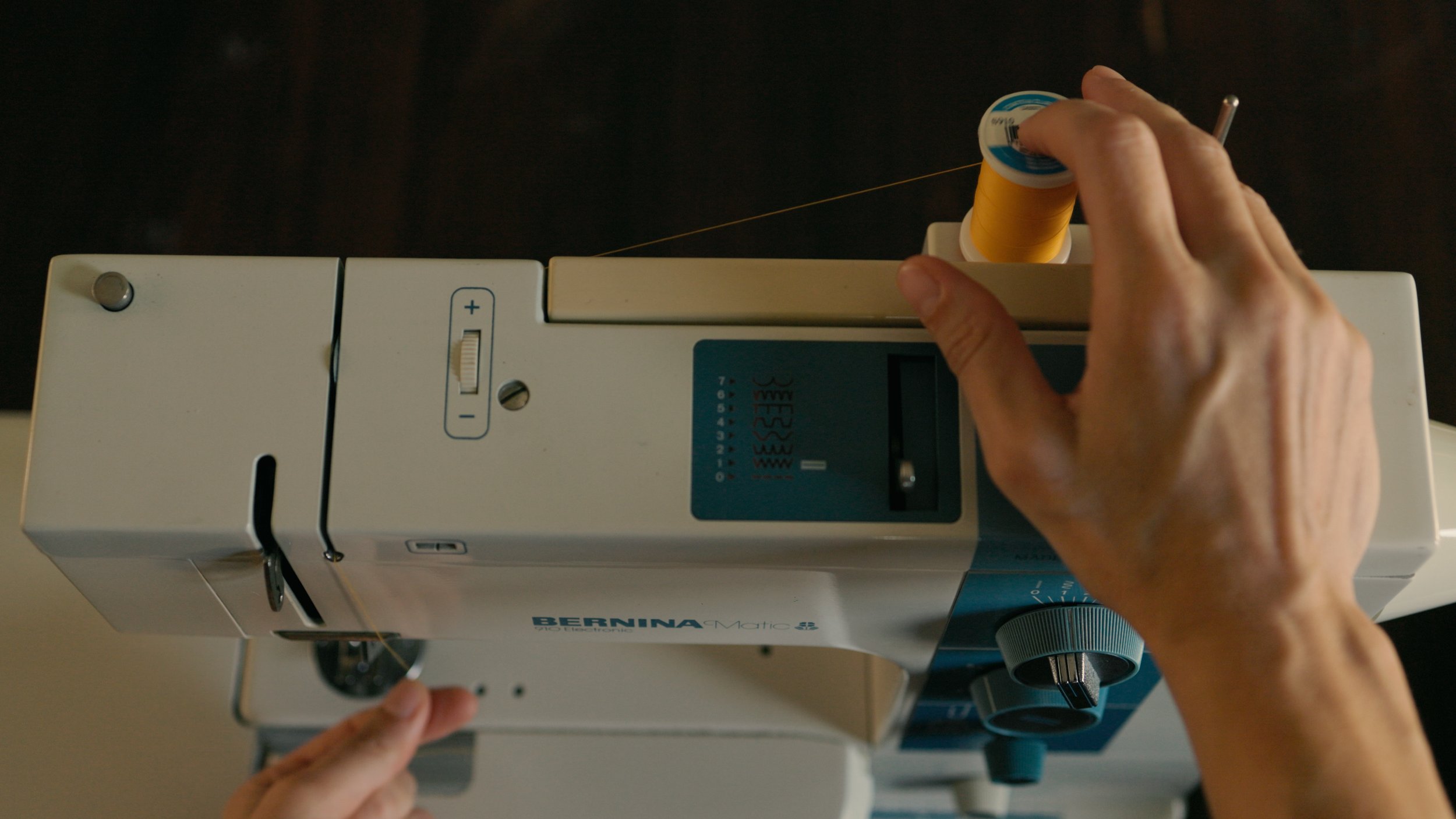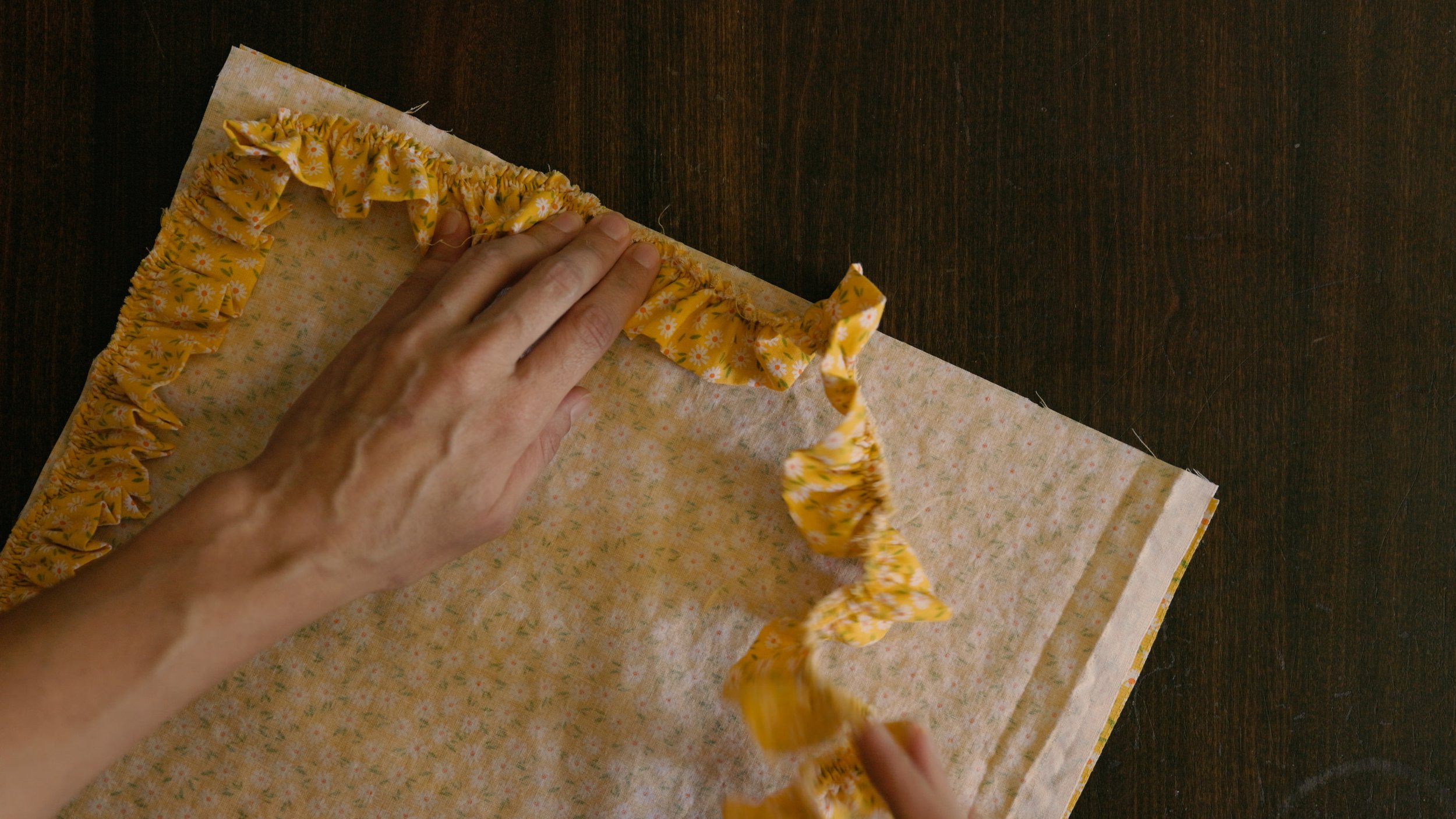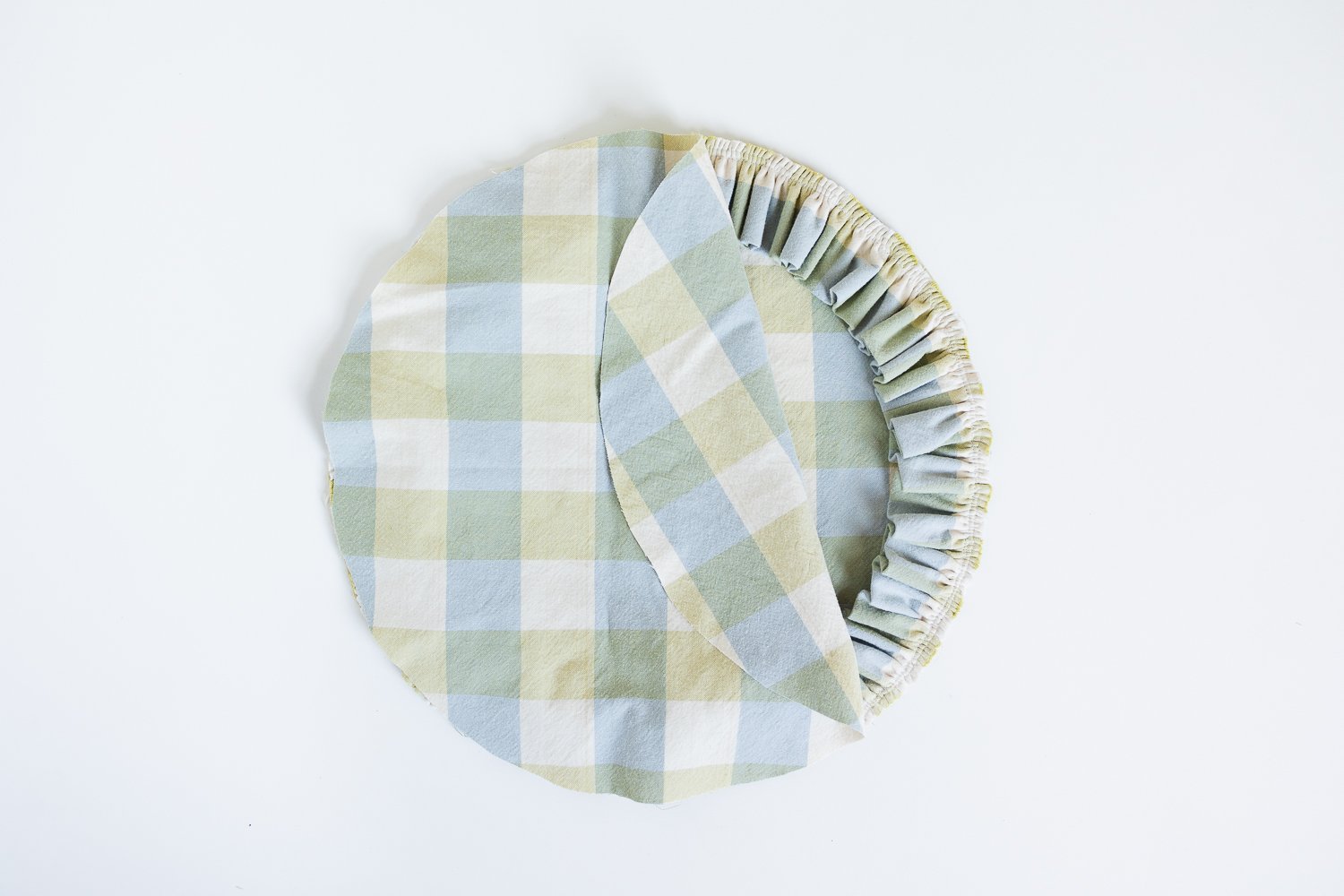Basics of gathering
Step 1: Sew a loose line of stitching without backstitching at the beginning or end. Then hold the bobbin thread tight.
Step 2: Scrunch up the fabric, little by little, while holding the bobbin thread tight.
Lines of stitching
Ruffles with one line of stitching is sufficient, but those ruffles can be unwieldy to sew. It is more likely the ruffles will fold over each other in the sewing process because the hills and valleys are high.
With each line of stitching added, the hills and valleys of the ruffles become more manageable. They become tamed.
A happy medium for me is two lines of stitching. I usually sew the first line of stitching with 3/8” (1 cm) seam allowance and a second line with 1/4” (0.6 cm) seam allowance.
How much gathering
One of the hardest decisions when playing with gathering is deciding how much ruffle do you want. Here’s a photo to help you determine which ratio works best for your project.
There are pros and cons using less ruffle and more ruffle. Less fabric makes the process faster, sometimes much faster to gather. But it’s easier to distribute the gathers evenly if there is more fabric to work with.
A happy medium I usually land on is about 2x.
For best sewing results
Use lots of clips! Clip clip clip.
Seam allowance
To conceal the gathering threads, be sure to use a seam allowance just as wide or wider than used for the lines of stitching to make the gathers.
Matching thread
Despite best efforts on seam allowance, the gathering threads sometimes peek through. Use matching thread to avoid the thread being noticed like this dark green stitching. But if any gathering threads are visible after sewing the ruffles, carefully cut and pull them out with a seam ripper.
Other tips
Some fabric gathers a lot easier than others. It can vary depending on fiber content and tightness of weave. If the thread breaks while trying to gather, try using a thicker thread like upholstery thread and loosening the stitch from the machine as much as possible.
Sometimes gathering takes a long time. Stick with it and go little by little.
The fun thing about ruffles is they are pretty forgiving. If the gathers aren’t evenly distributed, don’t sweat it. It doesn’t have to be perfect to look good. It’s fun to just play with them.
Now that you’re ready for ruffles, check out these tutorials in my ruffle series:
If you enjoyed this post, you may also enjoy…
Step by step video tutorial to fill your closet with ruffle tote bags of various colors.
Illustrated step by step guide and tips for getting started with quilting fabric.
Step by step photo tutorial to fill your living room with ruffle pillows.




























































































